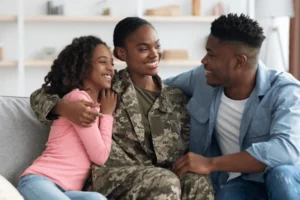November is National Gratitude Month.
Please take the time to click the link above and read our article on gratitude. It contains useful information about what gratitude is, the benefits of gratitude, the research behind gratitude, and how we can practice gratitude in our lives.
Thank you in advance for reading that article – we think it will help you learn the importance of gratitude in your daily life.
Now we want to help you help your teen understand the importance of gratitude in their daily life – because gratitude is amazing.
It takes very little effort, and the returns – a.k.a. the benefits – are enormous. In fact, they’re incredibly disproportionate. What else can improve your physical, psychological, emotional, and social health in countless ways with almost no personal cost?
We realize talk of cost and benefit – in the context of gratitude – may seem out of place. But if you can get your teenager to practice gratitude every day, we think you’ll see how it improves their lives – and they may not even realize what’s happening.
Three Simple Steps
Practicing gratitude is easy. We adapted the tips below from the website TeensHealth because we think they go straight to the heart of the matter. Get your kids to do these things every day, in whatever way you can. You decide whether you tell them they’re practicing gratitude. Some will be into the idea, and some will recoil: it all depends on the teen. The great thing about gratitude is it works no matter who’s practicing it. You be their guide – and watch what happens.
Here’s what to tell them to do: See, Savor, and Say.
- See. Look for and name three things every day they’re grateful for. The things can be:
- People: friends or teachers.
- Places: a great restaurant or a spot of stunning natural beauty
- Practices: they may be grateful for things they do, such as playing a musical instrument or participating in a sport or school club
- Savor. When you identify the things you’re grateful for, take the time to enjoy them. Slow down. Make them last. Here’s a helping hint: when something makes you go “Cool!” or “Wow!” or even “Awesome!” then that’s something you may be grateful for. That feeling – that little bit of joy – can transform into gratitude with a thought. Take the time to revel in it and experience it. That’s the feeling of gratitude you’re looking for.
- Say. Tell the people you appreciate how you feel about them. If they do something you think is amazing, tell them they’re amazing and awesome. If they do something for you, thank them for doing it. And when you think they need a helping hand, offer it. Kindness is gratitude in action.
As we mention above, you don’t have to tell your kids you’re teaching them to practice gratitude: all you need to do is tell them to See, Savor, and Say. If they can do those three things, we think you’ll see a positive change.
The Benefits of Gratitude
Self-help gurus talk about gratitude all the time, and for good reason. There’s something magical about gratitude that’s hard to explain unless you experience it. One thing we can tell you from experience is that gratitude begets gratitude: we’re fond of saying that one act of gratitude creates a virtuous cycle that never has to end.
Experts in neuroscience tell us that expressing and receiving gratitude releases the same chemicals that give us feelings of reward and satisfaction, and the brain areas that activate when we express or receive gratitude are the same areas that activate when we socialize and feel pleasure.
That may explain why gratitude begets gratitude – but we want to close with a thought that has nothing to do with chemicals in the brain or getting big rewards with a small amount of initial effort. We want to close with the idea that gratitude is about looking outside of yourself and seeing the good in the world, the good in people, and the good in your own life.
This is crucial for teenagers because their emotions can be a rollercoaster ride. Their emotions can be confusing and hard. When you add gratitude to the mix – when you teach them how to practice gratitude – they can soften the edges of those hard emotions and make the confusion feel less – well, confusing.
Gratitude also teaches kindness. When your teen learns to express gratitude, they also learn what an act of kindness feels like. For teenagers, that’s the real benefit of learning to look beyond themselves to see the good in the world: it teaches them that being kind is an end unto itself, and that kindness is its own reward.






























































